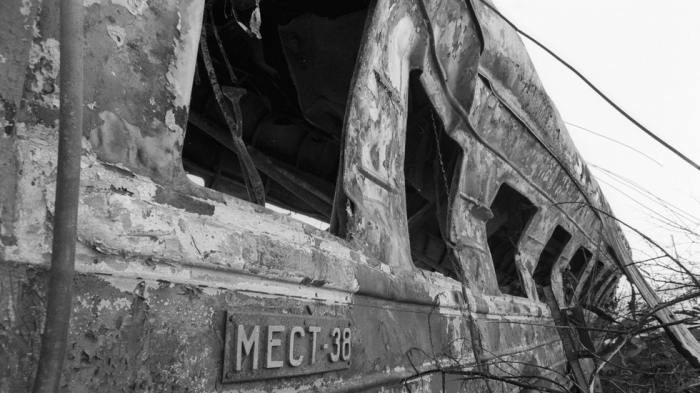The worst transport accident in Russian and Soviet history occurred on a stretch of the Trans-Siberian railway east of Ufa, in the Republic of Bashkiria. A major leak at a nearby pipeline had led to gas pooling in a hollow through which the tracks were laid. At 1:15 am local time on June 4, possibly ignited by a spark from the wheels of a braking engine, the accumulated gas exploded.
The blast was so strong that some analysts compared it to the nuclear attack on Hiroshima and Nagasaki. It had an explosive yield equivalent to between 250 to 300 tons of TNT, according to the Russian military, and created a pillar of fire visible 100 kilometers away. Trees in a four-kilometer radius were scorched or splintered.
Two trains packed with sleeping passengers were thrown off the tracks and destroyed. A total of 37 cars and both engines were wrecked; seven cars were completely gutted by the fire, and two dozen more turned into burned-out shells.

© RIA Novosti / Sergey Titov
The tragedy took 575 lives, including 181 children; another 600 people suffered burns and other injuries, according to official data. Out of over 1,300 people on both trains, only 52 escaped unaffected. Among the casualties was a junior hockey team from Chelyabinsk, with only one player surviving.
Those who were lucky to survive described what happened as pure hell, saying they were left mentally scarred forever even if they escaped life-changing physical injury.
"A terrible push woke us up," a man from Novosibirsk, who lost his grandson that night, told Russian media. "I was pinned down by a compartment door. When I got out I saw my grandson under a pile of metal. There was a man and a woman under him. I pulled Anton out and helped the others. My clothes started burning, I removed them and got out of the window. I picked my grandson up and walked away as quickly as possible because everything around was burning. He was placed in intensive care at the hospital. He died in front of my eyes."

© RIA Novosti / Sergey Titov
A woman from Adler said she woke up when she fell from the top bunk in her compartment. "It was all in flames. I thought it was some kind of nightmare: the skin on my hand was burning and peeling off, a burning child crawling at my feet, while a soldier with empty eye sockets walking towards me. I crawled past a woman who couldn't put out her burning hair."
Rescue efforts were hindered by the fact that the blast site was remote. The nearest town was Asha, in the Chelyabinsk region. All emergency vehicles from Ufa, 50 kilometers away, were sent to the site and medical staff worked tirelessly, but many people still died before reaching the hospital.
When they did arrive, the rescuers had to muster all their willpower to get to work. Later, they shared accounts of people engulfed in blue gas flames, their skin peeling off and sticking to rescuers' hands. One medic from Ufa said he and multiple other first responders had turned gray overnight from witnessing all the horrors.

© RIA Novosti / Sergey Titov
Then Soviet leader Mikhail Gorbachev arrived the same day, and said disaster had been caused by human negligence. The subsequent investigation confirmed it, revealing that officials knew that pressure had dropped in the gas pipeline three hours before the explosion. Instead of starting an urgent search for the leak, however, they chose to increase gas supply, leading to even more of the volatile substance flooding the hollow.

© RIA Novosti / Sergey Titov
The pipeline was also found to have been laid too close to rail tracks, in violation of safety rules. The 1.7-meter-wide hole in it was the result of damage caused by an excavator during its laying in 1985, which then went unrepaired for years.
Furthermore, one of the trains was over an hour behind schedule. Had it passed through on time, the death toll might have been cut in half.
There are grounds to believe the official figures were understated and the death toll was even higher. It was the start of holiday season, and the trains were packed with travelers to and from the Black Sea resort of Adler. Ticket records were used to determine the number of victims, but not everyone had them: children under five years old weren't required to get a ticket back then, and there may have been passengers who simply made a deal with the train crew to let them aboard without a ticket.
Investigations into the incident and the subsequent trials lasted for six years, concluding after the fall of the Soviet Union. Nine officials were found guilty of neglect. Seven of them were imprisoned for a maximum of five years, while two ended up receiving pardons.
RT
More about: Soviet
















































